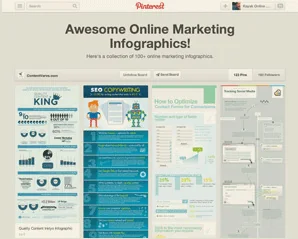Is Your Website Visitor a Skimmer or a Diver?
Summer’s here and people are taking to the water, whether it’s rafting down a slow creek or getting out the waterskis. If you’re avoiding the sun by staying in the office, there’s a take-away we marketers can learn from the people splashing around at the lake: there are the skimmers, and there are divers.
Chances are no matter what you’re offering, there’s more than one type of person who wants to buy it. And, that’s where marketing personas come into play. There’s value in having a solid understanding of who you’re talking to, both prior to and once they convert. You’ll know better what offers to present, and you’ll make more informed guesses about their needs.
Can your prospects teach you how to design the information flow on your website?
It’s always important to craft and recraft your marketing personas, and summertime may be just the time to take on such a project.
When considering the way information on your website leads prospects through your content and toward your offers in the sales funnel, it helps to take some time to consider the way your prospects have interacted with you in the past, especially if your analytics – or the visitors themselves – have hinted at their priorities. Remember that different personas will often have different ways of processing your information, and even your content offerings may be viewed quite differently. With differing goals, how can your navigation structure reflect the needs of each?
Skimmers or Divers?
Among the many ways people tend to enjoy themselves at the lake, on top of the water with skis and tubes, and underneath the water with fins and goggles tend to lead the list. Thinking of visitor pathways similarly can help you set up your navigation as well.
Skimmers want to get information as quickly as possible.
They want to know who you are, what you do, and how they can get it. They’re probably busy business owners, or otherwise pressed for time and attention. They need to know if you offer what they need, and fast. This doesn’t mean these people aren’t taking your hard work seriously – it likely means they are focussed and short on time, so if you can pass their criteria on a flash-visit, you could be on the right track to a great business relationship.
The downside is that if any part of the top layer of your website is unclear, you could lose the “skimmer” altogether or run into confusion down the line – especially true if you offer a service, which requires a more complex sales process than a simple transaction.
Can you educate the skimmers at the very beginning of your relationship, when they click on your link in Google?
It’s no secret that top level content needs to be clear and confident. Each link along the top of your website should contain copy that’s clearly written and prepares a skimmer to contact you without too many misconceptions about what you and your company do. Pay close attention to your above-the-fold content. What’s visible on the page before a visitor has to scroll down? With a skimmer, that could be all the content they have time to read.
Divers take the time to read almost every page you’ve got.
A diver is usually tasked with researching your company for their employer, and is doing a thorough job to ensure you meet all the important criteria before engaging with you. A few weeks ago, I posted about turning diver type visitors into advocates by appealing to them – because a diver is often acting on behalf of someone else. For a diver, the top level content is good, but the real reason they’re at your website is for the pages deep inside it. All of the pages you’ve built that provide further explanation of your services, your warranty and other company policies, as well as your blog and offers are going to be carefully examined.
You can help divers by guiding them through your website with smart internal linking (contextual navigation), transitioning one page or step to the next natural step.
How do you serve them both?
Think about information as a funnel for each page on your website. Create an ideal flow each visitor can take beginning with your homepage and moving through to your offers, and think about building these out in your website through internal linking as next steps. Put your next step links above the fold for skimmers (tip: download our marketing toolkit to help you plan this out), and at the bottom of the content you created for divers.
When it comes down to it, creating marketing personas are much more than a tool for your marketing team. Allow personas to guide every part of your company’s online presence, and you will have visitors entering your sales funnel more naturally than ever before.
{{cta(‘109ae00e-5dc7-4bb4-ad04-207e28df0d76’)}}{{cta(‘ab2f54c9-130d-474d-b1fd-2f642e788b86’)}}
From Randy on Social Media Today…
 Upgrading or replacing your website should be as simple as choosing a new template, deciding on a colour scheme, and watching the visitors come flocking in from search engines and social profiles, right?
Upgrading or replacing your website should be as simple as choosing a new template, deciding on a colour scheme, and watching the visitors come flocking in from search engines and social profiles, right?
Not really.
In fact, the best analogy we can draw for rebuilding a business website is one of renovating an old house. If you’ve ever been through that process, then you already know it doesn’t happen with the speed you see on TV. Instead, it involves assessing what you have to work with, keeping an eye open for hidden technical challenges, refining design or structural elements, and working away at it until you have something you can live with, or in.







